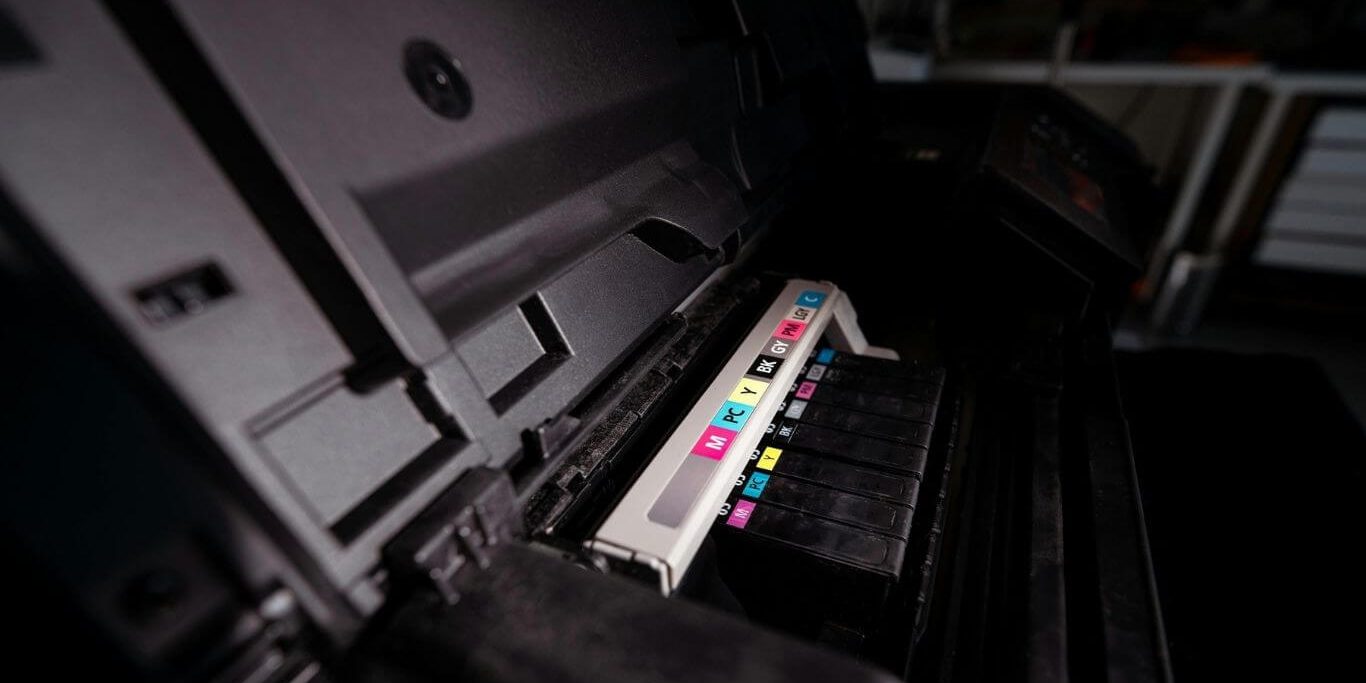Thinking about how to start a small printing business but unsure where to begin? You’re not alone. A lot of people are looking for flexible and creative ways to make money from home or open a small local shop—and printing can be a great option. From custom t-shirts to business cards and banners, the demand for printed products remains strong and shows no signs of slowing down. The best part? You can launch your printing business without spending a fortune upfront.
Maybe you’ve always been the go-to person for designing birthday invitations or printing team t-shirts. Or maybe you’re just looking for a side hustle that could grow into something bigger. Either way, diving into the world of printing can be fun, fulfilling, and profitable—if you set it up right.
In this guide, we’ll break it all down in simple, everyday language. You’ll learn what you really need to start a small printing business, avoid common mistakes, and set yourself up for success—even if you have zero experience.
Why a Small Printing Business Is a Smart Idea
Starting a small printing business can give you the flexibility to work on your own terms—at home, in a garage, or a rented space. Here’s why it’s worth considering:
- Low initial investment required if you begin on a small scale and grow steadily over time.
- Growing demand for customized items like t-shirts, mugs, posters, and business marketing materials
- Multiple niches to choose from (weddings, schools, sports teams, local businesses, etc.)
- Creative freedom to design and experiment
- Great potential for recurring clients like schools, event planners, and small businesses
Whether you’re into art, graphic design, or just want to run a profitable side hustle, the printing business can be tailored to your interests.
Pick Your Niche and Services First to Start a Small Printing Business
Before buying any equipment, you need to decide what type of printing services you want to offer. Each type comes with its own tools, target market, and startup costs.
Here are some common and profitable printing niches:
- T-shirt and apparel printing (using heat press, screen printing, or DTG)
- Business printing (flyers, business cards, brochures)
- Custom promotional items like mugs, tote bags, pens, and more
- Event printing (invitations, banners, signage)
- Sticker and label printing (popular with small product-based businesses)
Tip: Choose one niche to start with that you can confidently manage. It’s better to master one area before expanding into others.
Essential Requirements to Start a Small Printing Business (Only What You Really Need)
You don’t need a full print shop from day one. Here’s a list of basic equipment and supplies to launch your small printing business without breaking the bank:
1. A Good Printer
Depending on your niche, you might choose:
- Inkjet or laser printers for paper-based products
- Heat press machines for t-shirts
- Sublimation printers for mugs or polyester fabrics
- DTG (Direct-to-Garment) printers if you want higher-quality shirt prints
2. Computer and Design Software
You’ll need a reliable computer or laptop plus basic design software. Good options include:
- Canva (beginner-friendly and free)
- Adobe Illustrator or Photoshop (if you want advanced tools)
3. Materials and Blanks
Based on your service, you’ll need to stock up on things like:
- Blank t-shirts, mugs, bags, and caps
- Vinyl rolls for heat transfer
- High-quality paper, ink, or toner
4. Workspace
Even a spare room or garage works just fine when you’re starting out. Just make sure it’s:
- Well-ventilated (especially for heat or sublimation printing)
- Organized to avoid mixing customer orders
- Equipped with shelves or bins to store supplies
Legal Stuff: Set Up Your Business Properly
Don’t skip this part—it keeps your business legit and avoids trouble later.
Here’s a basic checklist:
- Select a business name and verify its availability online before registering
- Officially register your business as a sole proprietorship, partnership, or LLC to establish its legal identity
- Obtain any required permits or licenses based on your local city or state regulations
- Open a separate bank account for your business to manage personal and company finances more efficiently
- Apply for an Employer Identification Number (EIN) from the IRS if your business structure or local laws require it for tax and legal purposes.
Pro tip: For detailed guidance on business registration and permits, visit the U.S. Small Business Administration (SBA) website, which offers valuable free resources and support for new entrepreneurs.
Create Your Pricing Strategy
Pricing can be tricky, especially at the beginning. Your goal is to keep your prices budget-friendly while still earning a healthy profit for your business.
Here’s an easy method to figure out your pricing:
Cost of materials + time spent + overhead + profit margin = Your price
Let’s say:
- A blank shirt costs you $3
- Vinyl design costs $1
- Estimate your hourly labor cost at $15 for pricing purposes
- Add a $5 profit
The total cost adds up to $24, which you can round up to $25 for simplicity and better profit.
Start with this formula and adjust based on customer feedback and market research. Avoid aiming to be the cheapest—prioritize delivering value and quality instead.
Build a Simple Online Presence
You don’t need a fancy website right away, but people need a way to find and contact you. Here’s what you can do:
- Set up a Facebook Page and create an Instagram account to boost your online presence
- Set up a Google Business Profile to improve your local search presence and make it easier for nearby customers to find your printing services
- Use free website builders like Wix or WordPress.com to create a simple site
- Post photos of your work, customer reviews, and pricing info
If you want to scale, consider opening an Etsy store or selling on platforms like Shopify or Amazon Handmade.
Find Your First Customers
Getting your first few clients might seem scary—but it’s totally doable. Start with:
- Friends and family: Offer a discount in exchange for referrals or reviews
- Local businesses: Drop off sample flyers or offer branded t-shirts
- Schools and sports teams: They often need printed gear, signs, and awards
- Social media: Post before-and-after photos, behind-the-scenes content, or special deals
Bonus idea: Run a giveaway to attract followers and showcase your work.
Deliver Excellent Customer Service
Great products matter—but customer service is what brings people back. Here’s how to stand out:
- Respond quickly to messages
- Offer clear timelines and stick to them
- Fix mistakes without blaming the customer
- Include thank-you notes or small freebies to surprise your buyers
Your reputation will spread faster than any ad if people feel appreciated and heard.
Common Mistakes to Avoid
Here are a few things to watch out for, especially when you’re just starting:
- Purchasing excessive equipment prematurely: Begin with minimal resources, then scale up as your business grows
- Underpricing your work: Know your worth and don’t compete just on price
- Not tracking expenses: Use a spreadsheet or free app like Wave to manage money
- Ignoring customer feedback: Use it to improve and build trust
- Skipping marketing: A great product is useless if nobody knows about it
Gaining insights from others’ mistakes can help you save valuable time, reduce costs, and avoid unnecessary stress.
Conclusion: Ready to Start Your Small Printing Business?
Starting a small printing business might seem overwhelming at first, but with the right plan and mindset, it’s totally doable—even from home. Focus on a specific niche, invest in just the essentials, and build strong relationships with your first customers. You don’t need everything figured out on day one. Approach it one step at a time, learn along the way, and embrace starting small without hesitation.
Want more tips on growing your creative business? Stick around and explore more of our helpful guides—you’ve got this!
If you’re exploring other small business ideas, you might also be interested in our simple guide on how to start a bookkeeping business, which breaks down the basics for beginners.
Frequently Asked Questions (FAQ) About Starting a Small Printing Business
Do I need a large amount of money to launch a small printing business?
Not at all. You can start your printing business with minimal upfront costs by using basic equipment and expanding as your business grows. Beginning small allows you to control expenses and minimize financial risks.
What types of printing services can I offer?
There are many niches to choose from, including t-shirt printing, business cards, promotional products like mugs and pens, event printing such as banners and invitations, and sticker or label printing. Choose one niche that you’re confident handling before expanding further.
What equipment is essential for a printing startup?
The basic equipment depends on your chosen niche. Common essentials include a good printer (inkjet, laser, sublimation, or DTG), a reliable computer with design software, blank materials like shirts or mugs, and a well-organized workspace.
How do I set the right price for my printing products?
Calculate your costs by adding material expenses, your time, overhead, and a profit margin. For example, if a blank shirt costs $3, vinyl costs $1, your time is valued at $15 per hour, and you add a $5 profit, your total price would be around $24-$25.
Do I need to register my printing business legally?
Yes, registering your business is important to operate legally and avoid future problems. Choose a business name, register it with the appropriate authorities, obtain necessary permits or licenses, and consider getting an Employer Identification Number (EIN) if needed.
How can I attract my first customers?
Start by reaching out to friends, family, and local businesses. Offer discounts or samples to get referrals and build your reputation. Use social media platforms like Facebook and Instagram to showcase your work and connect with potential clients.
Is it necessary to have an online presence?
Absolutely! Even a basic online presence makes it easier for customers to find you quickly. Create social media profiles, set up a Google Business Profile for local visibility, and consider a basic website using platforms like Wix or WordPress.
What common mistakes should I avoid when starting a printing business?
Don’t rush into purchasing excessive equipment, undervalue your services, overlook expense tracking, disregard customer feedback, or neglect marketing. Steering clear of these pitfalls will help you save both time and money as you grow your business.



